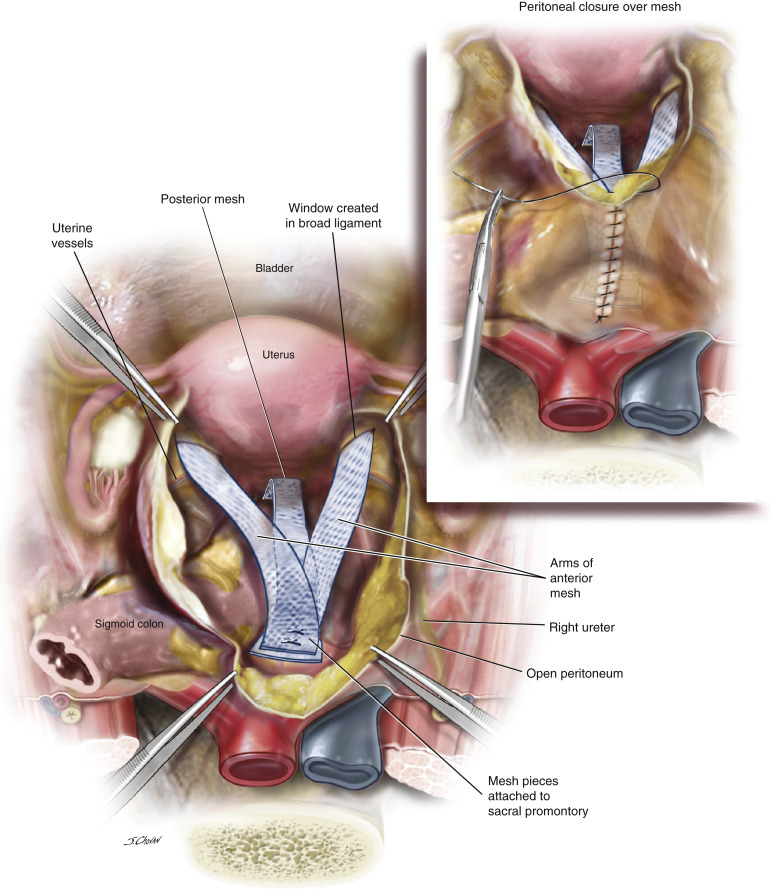Uterine Prolapse
Home-> services-> uterine-prolapse

Uterine Prolapse
Overview:
Uterine prolapse is a disorder in which one’s uterus/womb slips down to her vaginal canal. This happens because the muscles & ligaments which normally keep the uterus in the pelvic area weaken and get stretched. This condition can happen at any age but is more common in postmenopausal women who have experienced difficult delivery & labor during one or more pregnancies. The weakening and stretching of the pelvic floor muscles may lead to sagging of the uterus in the following stages:
- First degree: The cervix—the lowermost part of the uterus, drops into the vagina.
- Second degree: In the second stage it drops to the level just inside the opening of the vagina.
- Third degree: Here, the cervix is outside the vagina.
- Fourth degree: The whole uterus completely comes out of the vagina
Causes:
The main cause of uterine prolapse is the weakening of the supporting muscles & tissues. This can happen due to the following reasons:
- Pregnancy: Normal or complicated vaginal delivery may lead to weakening of the muscles.
- Age: The pelvic muscles may weaken naturally with advancing age.
- Menopause: The estrogen levels and the tissue tone may drop due to menopause which may loosen the muscles.
- Pressure in the abdomen: Conditions such as chronic cough, straining due to constipation or accumulation of liquid in the abdomen area which lead to increased pressure are also causative factors.
- Obesity: Being overweight can cause strain on these muscles.
Risk Factors:
Risk factors range from lifestyle to genetic factors. Past surgeries, deliveries and current medication can also increase the risk of uterine prolapse.
Lifestyle & health factors:
- Heavy lifting exercises.
- Increasing age.
Genetic factors:
- Predisposition to weakness in connecting tissue due to genetics.
- Being Caucasian or White.
Past or current medical situation & surgeries:
- Delivery of a large baby through the vagina.
- Chronic coughing.
- Straining due to constipation.
- Prior pelvic surgery.
Symptoms:
The extent of severity of the symptoms varies from patient to patient. Some patients may be asymptomatic i.e. they may feel no symptoms at all while the others may feel moderate to severe symptoms. Following are the symptoms that are associated with uterine prolapse.
- Difficulty in walking.
- Pain during bowel movement & urination.
- Fullness in the pelvic area.
- Constant feeling that something is coming out of the vagina.
- Pain during sexual intercourse.
- Pain in the lower back region.
- Difficulty in urine retention or a constant urge to urinate.
Diagnosis:
Generally doctors conduct physical examinations to ascertain uterine prolapse but they may use imaging techniques such as ultrasound, to find out the extent of the prolapse; or to eliminate other pelvic disorders.
Physical examination: The doctor may examine you while you are in a standing position as well as when you are lying down. The doctor may ask you to put pressure on you abdomen by coughing, straining abdomen muscles and tightening your pelvic muscles.
Ultrasound: The doctor may use ultrasound in order to understand the degree of the prolapse. Ultrasound is an imaging technique, in which, with the help of ultra sound waves the doctor can examine the required organs on the monitor. The doctor uses a device known as a transducer to achieve this; he may insert the transducer inside the patient’s vagina or move it over the patient’s abdomen. Ultrasound is also helpful to rule out other pelvic disorders.
Treatment:
The treatment depends on the extent to which the uterus has prolapsed and how weak the muscles have become. Treatment includes self care, medication and surgery.
Kegel Exercises:
Kegel exercises are a set of exercises aimed at tightening the pelvic muscles. They involve contracting the pelvic muscle as if to control urine flow. It leads to strengthening of the pelvic diaphragm.
Medication:
When uterine prolapse occurs due to low levels of estrogen & is caused by menopause, using medication to increase estrogen levels can help in treatment. Estrogen creams or rings are used to achieve the same.
Surgery:
Depending on extent of the prolapse, the doctor may perform surgery to repair the pelvic floor muscles or to remove the uterus.
Laparoscopy:
Laparoscopy is a minimally invasive surgery in which a small and lighted instrument known as the laparoscope is inserted through small incisions made around your abdomen area. This is done in order to repair the pelvic floor muscles.
Hysterectomy:
In case the womb/uterus requires to be removed, then a procedure called hysterectomy is performed. Since the womb is removed in this procedure, it should only be pursued if the patient has no desire of child birth.
Other therapy:
In case you do not want surgery or are not a suitable candidate for surgery then an alternate treatment exists. In this case, a device called a pessary has to be worn in your vaginal canal. This device provides support to the uterus. If the extent of prolapse is high, then a pessary may not work.